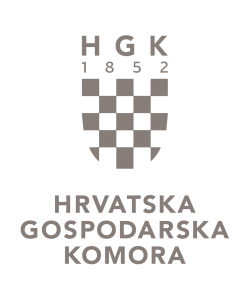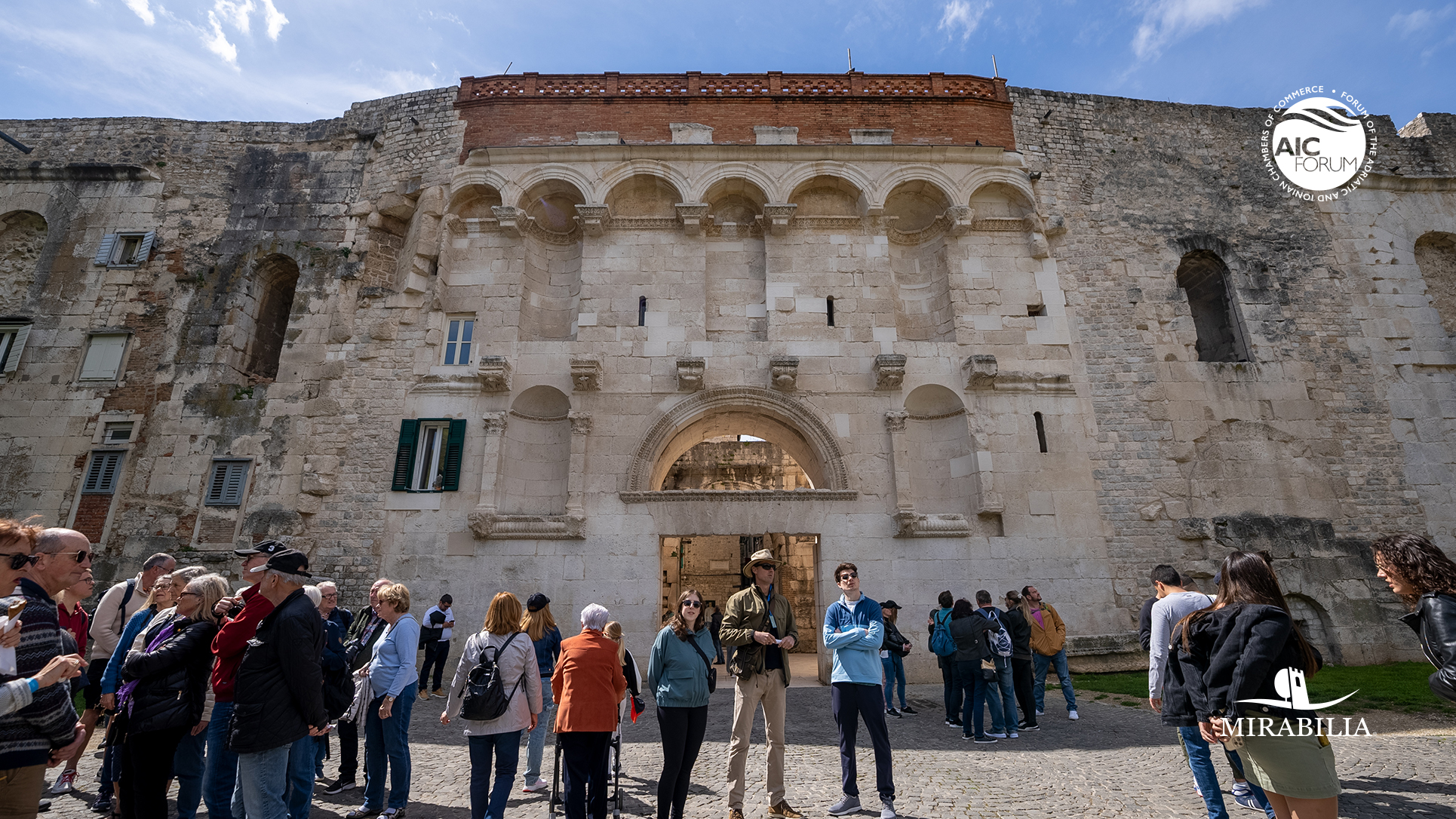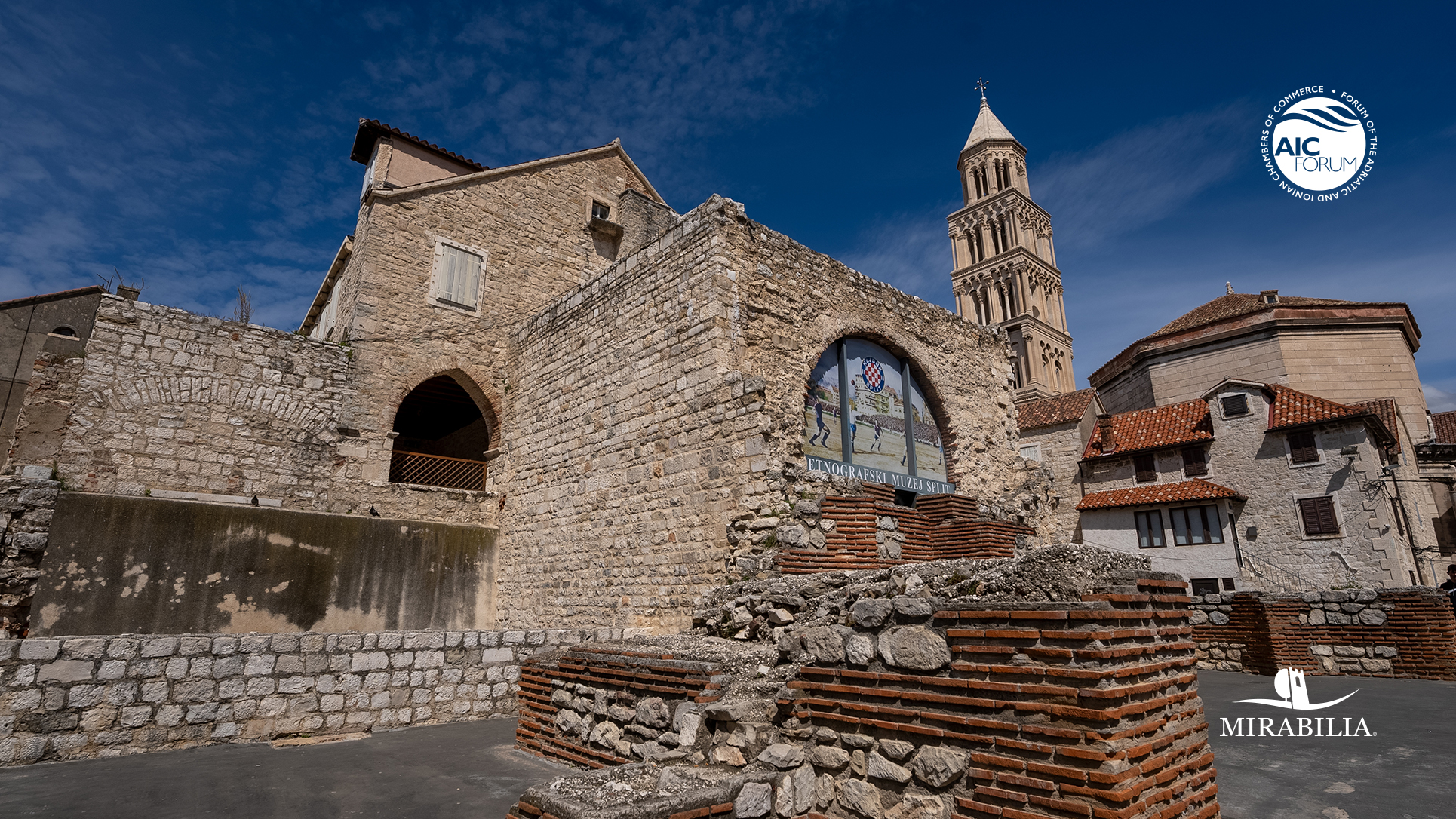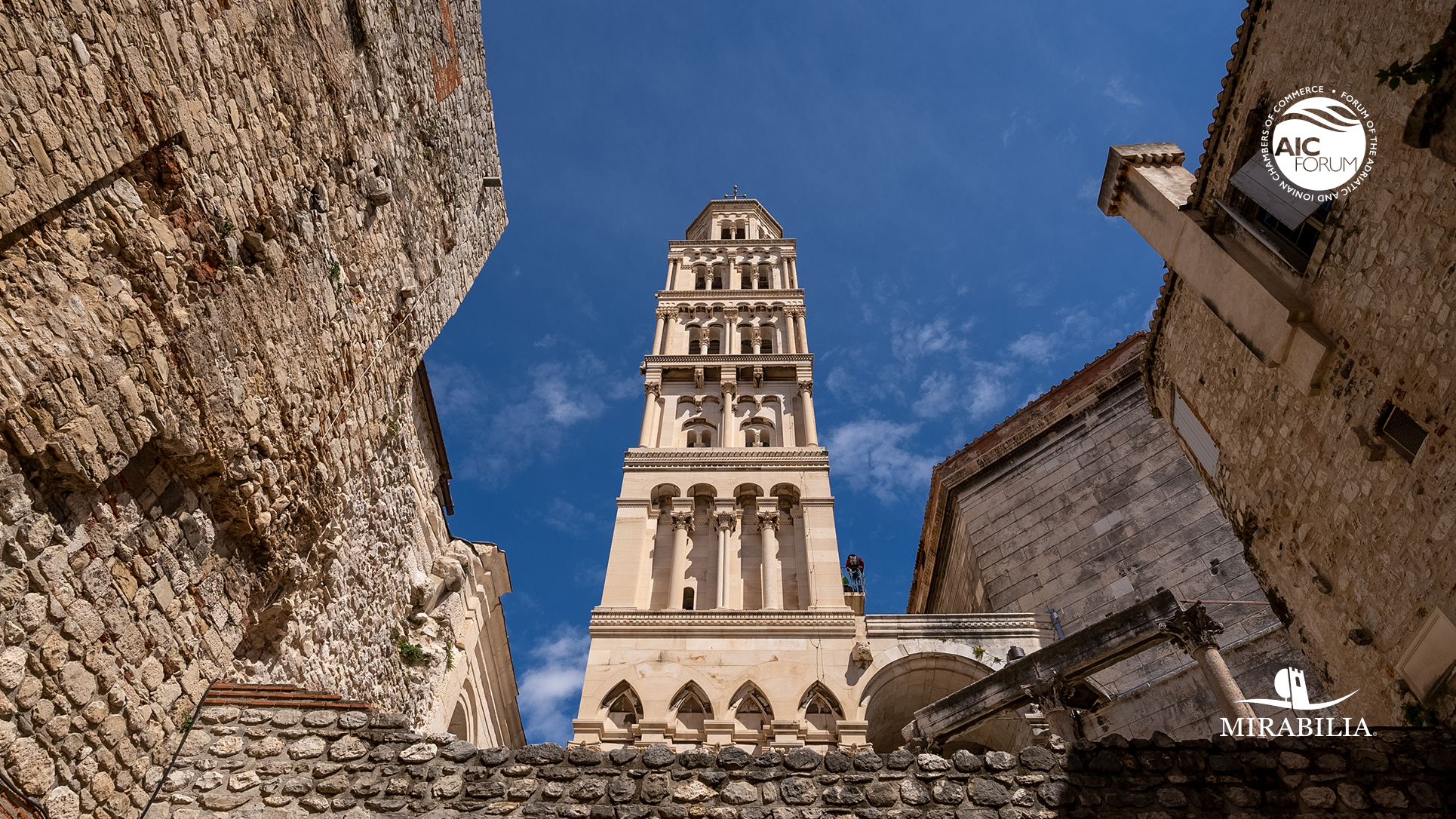The story of Split is already 17 centuries old, dating to the time the Roman Emperor Diocletian decided to build his Palace right on the peninsula near the great Roman city Salona, where he wanted to spend the last years of his life. During these 1700 years the Palace slowly turned into a city, which to this day lures with its rich tradition, glorious history and beauty of its natural and cultural heritage. Diocletian Palace and the entire historical core of Split have been on the World Heritage UNESCO list ever since 1979, and not only for the extraordinary preservation of the Palace, but also because the Palace and its city (or the city and its Palace, if you like) continue to live a full life. All historical layers from the old Rome, middle ages till today are still visible and
alive in this structure. A walk through the ancient city takes you through time, along the great examples of ancient architecture like Peristyle, the middle aged Romanesque Church and Gothic Palace, Renaissance portals of the noblemen’s houses, Baroque facades and modern architecture superbly merged in the rich heritage.
COME ARRIVARE
- Split Airport,
- Split railway station,
- Split bus station
- Split harbour.
MUST SEE
Cathedral of Saint Domnius finds its seat in the Mausoleum of the Roman Emperor Diocletian in the 7th century. The bell tower of the Cathedral (57m) is the most original Dalmatian Medieval architecture started in the 13th century. The bell tower was thoroughly reconstructed and somewhat altered at the turn of the 20th century. Today you can climb the steps all the way to the top of the bell tower, where a spectacular view of the entire Split awaits you.
Other Sacral monuments:
The Franciscan Church and Monastery of St Anthony on the north side of the Split Peninsula. Built in 1020 by the Archbishop of Split, Paul, and hence managed by the Benedictine monks. Church and Monastery of St. Francis on the western part of Riva was built on the old early Christian site, by the grave and a small Church of St. Felix, a martyr from the time of Diocletian.
Inhabited by the Little brothers of St. Francis in the 13th century.
City squares:
Prokurative or the Republic Square resemble the St. Marks Square in Venice. It was initiated by on of the most renowned mayors in the history of Split, Antonio Bajamonti.
Pjaca or People’s Square is first mentioned in 13th century as St. Lawrence’s Square and it was the first inhabited part of Split outside the Diocletian’s palace.
CAN'TMISS
- Solin and its historical site of Salona. The oldest Marian shrine in Croatia, established by the Queen Jelena more than a thousand years ago, is located in Solin. Its church holds her tombstone and was visited by the Holy Father, Pope John Paul II, in 1998. The ancient
Salona lies in the heart of Solin and was once the capital of the Roman province of Dalmatia. It is the largest archaeological park in Croatia, whose size is attested by the monumental ramparts with towers and gates, a forum with temples, an amphitheatre and cemeteries with Salonian martyrs (Manastirine, Kapljuč, Marusinac). Salona was a town with over 60 000 inhabitants and, according to the legend, the birthplace of Emperor Diocletian. - Islands of Brač, Hvar, Šolta and Vis all offer wonderful nature preserves and historicalheritage. The Blue Cave on the island Biševo on the south side of the island Vis.
- The Kliss fortress has a history of more than 2000 years, beginning with the Illyrian tribecalled Dalmatae that used it as a stronghold before it was taken by the Romans. After the fall of the Roman Empire, the site became a seat for several Croatian kings. Later, the KlisFortress was pivotal in defending the Balkans against the siege of the Mongols, then the Ottomans in the 1500s.
ASSOCIATED CHAMBER OF COMMERCE
Croatian Chamber of Economy- Split County Chamber
Obala Ante Trumbića 4 - 21000 Split
Tel: +385 21 321 100 ; +385 21 321 101
E-mail: hgkst@hgk.hr
Web: https://www.hgk.hr/zupanijska-komora-split








